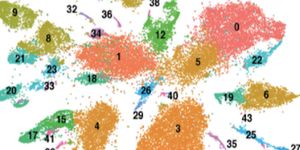Damaged Heart Cells Can Regenerate Using Innovative Technique
There is no definitive “treatment” for the damage that results from a heart attack because the heart cells cannot regenerate themselves after such an attack. But scientists from Columbia University present a new approach that involves using heart cells’ own molecular messages to improve regeneration after a heart attack.
After the death of heart muscle cells, called cardiomyocytes, in the wake of a heart attack, the heart is unable to adequately pump blood. Essentially, the heart is forced to do the same job but with less cells.
The response by scientists from all over the world has recently been stem cell transplantation to replace dead and damaged cardiomyocytes with new cells to improve heart function after a heart attack. However, there are several problems associated with this approach. First, implanted stem cells don’t always survive or successfully transform into cardiomyocytes as intended. Additionally, implanted cardiomyocytes often fail to beat synchronously with the heart, increasing the risk of dangerous abnormal heart rhythms called arrhythmias.
The new approach designed by the team from Columbia University involves applying extracellular vesicles secreted by the cardiomyocytes themselves. These vesicles are secreted by virtually all cell types, and cells use the genetic information the vesicles contain to communicate with other cells.
“We postulated that the benefits of cell therapy of the heart could be coming from the secreted bioactive molecules (such as microRNAs), rather than the cells themselves," explained senior author Vunjak-Novakovic. "So we explored whether the benefits of cell therapy of the injured heart could be achieved without using the cells. This way, we would largely simplify the translation into the clinic, and avoid the burden of arrhythmia associated with implantation of contractile cells."
Developing a therapeutic approach to heart attack using these vesicles has several advantages over a more traditional cell-based therapy. First, the vesicles are easily to isolate and store, so they can either be used immediately in an “acute-care setting” or be saved for later use. As opposed to implanted stem cells, extracellular vesicles do not raise the risk of arrhythmia, and their regulatory path towards clinical application is simpler than the path for cell-based therapies.
Researchers evaluated the effectiveness of this approach first by isolated cardiomyocytes from adult human stem cells and collected their secreted extracellular vesicles. Next, they used next-generation sequencing to compare the genetic information in these vesicles compared to vesicles secreted by undifferentiated stem cells.
They found that extracellular vesicles from cardiomyocytes, not from undifferentiated stem cells, contained powerful regulatory molecules called “cardiogenic and vasculogenic microRNAs.”
Next researchers developed a collagen-based patch that takes the vesicles and releases them slowly over four weeks. They implanted the patch into the hearts of rats used as a model of heart attack. Researchers found that the rate of arrhythmia was much lower in this scenario than with cell therapy.
“By four weeks after treatment, the hearts treated with extracellular vesicles had similar cardiac function as those that were never injured,” Vunjak-Novakovic said.
"Once we better understand how exactly the extracellular vesicles do what they do," Vunjak-Novakovic concluded, "we should be able to extend their use to a range of cardiovascular diseases, and significantly advance the field of cell-free heart therapy."
The present study was published in the journal Nature Biomedical Engineering.
Source: Columbia University School of Engineering and Applied Science









